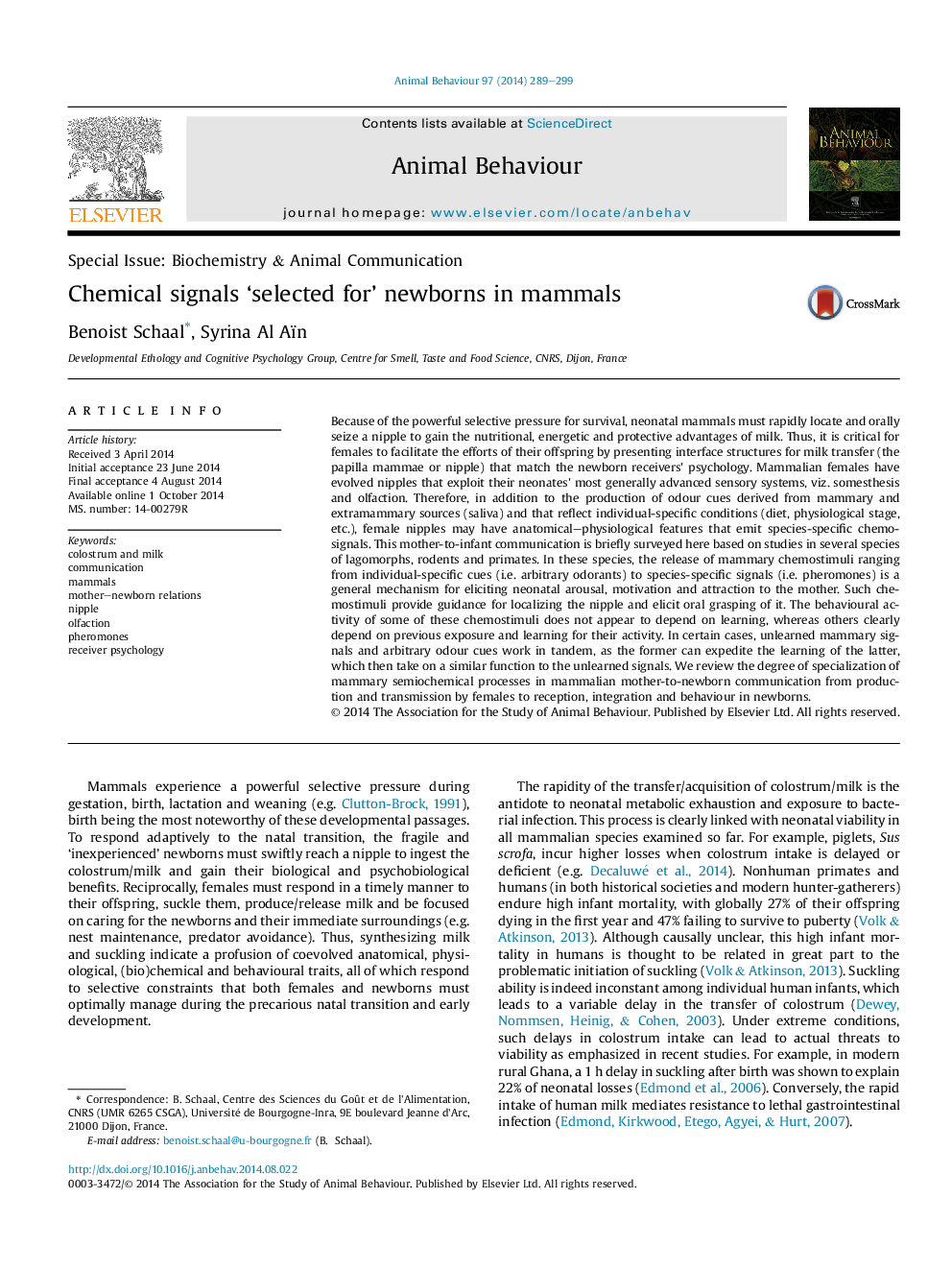| کد مقاله | کد نشریه | سال انتشار | مقاله انگلیسی | نسخه تمام متن |
|---|---|---|---|---|
| 8490344 | 1552231 | 2014 | 11 صفحه PDF | دانلود رایگان |
عنوان انگلیسی مقاله ISI
Chemical signals 'selected for' newborns in mammals
ترجمه فارسی عنوان
سیگنال های شیمیایی برای نوزادان در پستانداران انتخاب شده است
دانلود مقاله + سفارش ترجمه
دانلود مقاله ISI انگلیسی
رایگان برای ایرانیان
کلمات کلیدی
شیر و شیر، ارتباطات، پستانداران، روابط مادر نوزادان، نوک پستان، التهاب فرومون روانشناسی گیرنده،
موضوعات مرتبط
علوم زیستی و بیوفناوری
علوم کشاورزی و بیولوژیک
علوم دامی و جانورشناسی
چکیده انگلیسی
Because of the powerful selective pressure for survival, neonatal mammals must rapidly locate and orally seize a nipple to gain the nutritional, energetic and protective advantages of milk. Thus, it is critical for females to facilitate the efforts of their offspring by presenting interface structures for milk transfer (the papilla mammae or nipple) that match the newborn receivers' psychology. Mammalian females have evolved nipples that exploit their neonates' most generally advanced sensory systems, viz. somesthesis and olfaction. Therefore, in addition to the production of odour cues derived from mammary and extramammary sources (saliva) and that reflect individual-specific conditions (diet, physiological stage, etc.), female nipples may have anatomical-physiological features that emit species-specific chemosignals. This mother-to-infant communication is briefly surveyed here based on studies in several species of lagomorphs, rodents and primates. In these species, the release of mammary chemostimuli ranging from individual-specific cues (i.e. arbitrary odorants) to species-specific signals (i.e. pheromones) is a general mechanism for eliciting neonatal arousal, motivation and attraction to the mother. Such chemostimuli provide guidance for localizing the nipple and elicit oral grasping of it. The behavioural activity of some of these chemostimuli does not appear to depend on learning, whereas others clearly depend on previous exposure and learning for their activity. In certain cases, unlearned mammary signals and arbitrary odour cues work in tandem, as the former can expedite the learning of the latter, which then take on a similar function to the unlearned signals. We review the degree of specialization of mammary semiochemical processes in mammalian mother-to-newborn communication from production and transmission by females to reception, integration and behaviour in newborns.
ناشر
Database: Elsevier - ScienceDirect (ساینس دایرکت)
Journal: Animal Behaviour - Volume 97, November 2014, Pages 289-299
Journal: Animal Behaviour - Volume 97, November 2014, Pages 289-299
نویسندگان
Benoist Schaal, Syrina Al Aïn,
